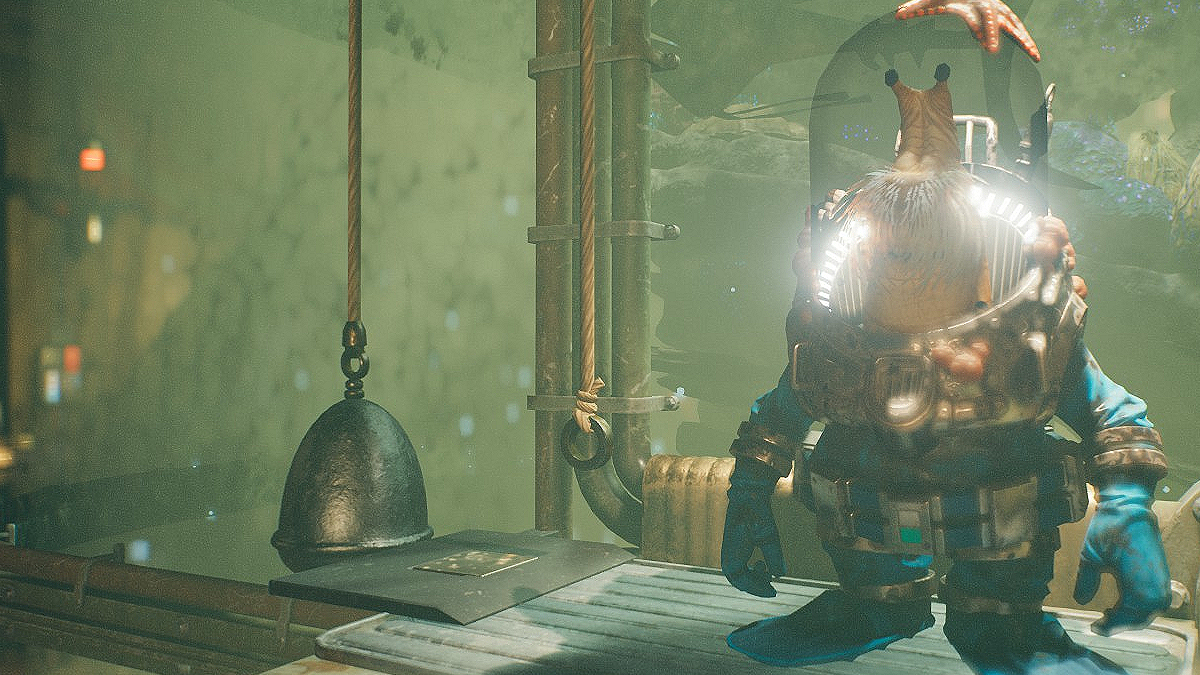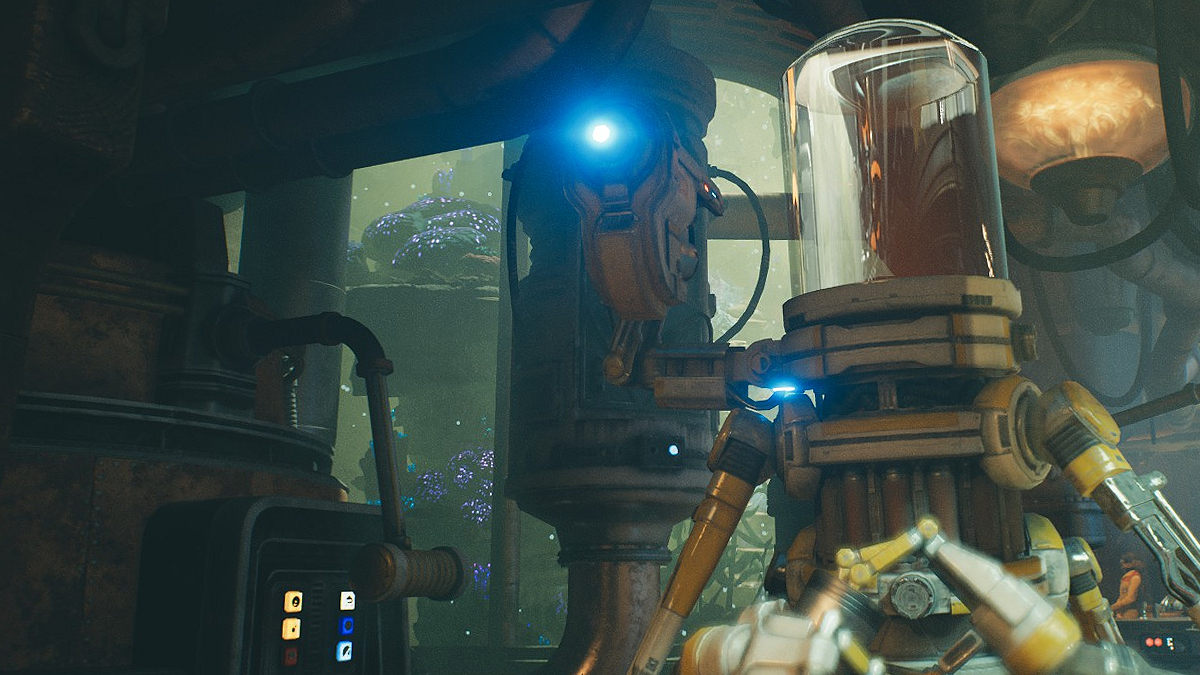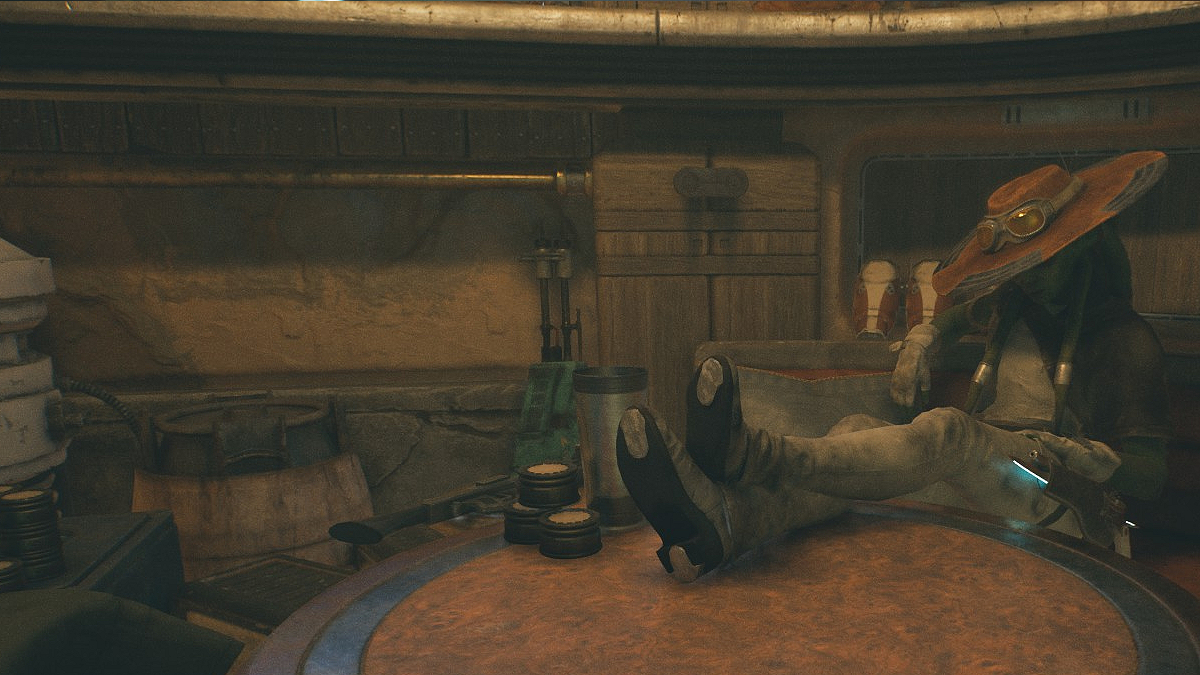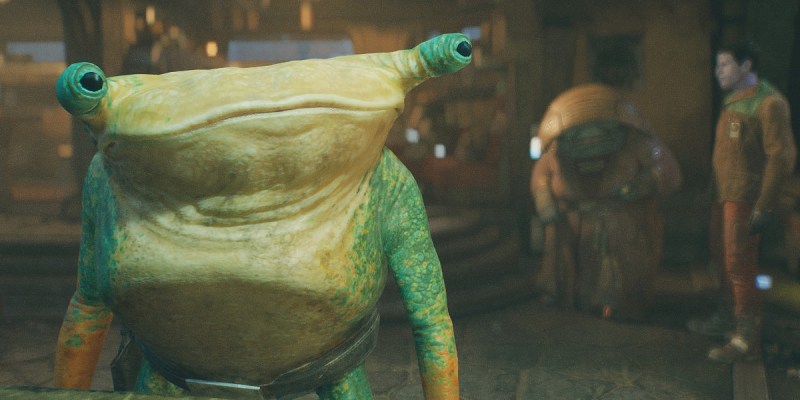Cal Kestis is about as standard as AAA protagonists come. While I’ve started to like him in Star Wars Jedi: Survivor, thoroughly charmed by his personal journey in the wider context of rebellion against an intergalactic empire, I can’t deny he’s somewhat… straightforward.
There’s nothing wrong with him, to be clear. He’s just an inoffensive, focus group-tested video game action hero. He quips, he’s kind to everybody, and he comes with a fully customizable beard. There’s a well-told character narrative in there that shines through at points, but it’s wrapped in the cocoon of fully poseable action figure vibes.
However, Cal fills one role well: He’s a platform for the rest of the cast to shine. Jedi: Survivor is a gift-wrapped package of interstellar side-creatures and characters that ooze personality. In a stroke of genius, the game funnels most of them into Pyloon’s Saloon, allowing Cal’s bland mien to bump up against them as regulars of Koboh‘s one and only watering hole.
I’m not just talking about Turgle here, though his loveable, Richard Horvitz-brand scrappiness and vacant froggy stare have earned a rent-free place in my brain. Pyloon’s Saloon is overflowing with a broad array of loveable freaks and cool cats who’d give Han Solo a run for his credits. As I got chatting to this motley crew, I realized that Respawn Entertainment had recaptured something that I’d been missing for quite a while now.

As Star Wars has grown into a Disney-managed brand, it’s never quite recaptured the same earnest zaniness of the original trilogy. If it’s employed, it’s employed as an aesthetic, self-referential nod. Characters are reused instead of invented, leading to stagnation that makes me wonder if we treated Jar Jar Binks too harshly.
Star Wars Jedi: Survivor goes wild with its characters on a concept level, yes, but it treats its creations as fully realized characters rather than mere set dressing. We get to learn about their stories, their dreams, and their desires, even if it’s from the mouth of a fisherman slug the size of a trash can.
The game feels untethered from the chains of mass marketability. Pyloon’s Saloon is a friendlier Mos Eisley cantina, flooded with alien personality and out-of-this-world character design. It’s a magic that the movies have lost, resurrected by a studio who clearly let its artists run free.

Some of these characters even make me want to experience their stories firsthand. Imagine an Uncharted-style stealth action adventure following Moran’s smuggling exploits, or a bounty-hunting third-person shooter where you play as Caij fighting the Haxion Brood. Mainline Star Wars media has been dominated by the Jedi and Sith for so long, but its non-Force sensitive population is just as intriguing to me.
Because there are ways in which we expect a Jedi or a Sith to act, this inevitably limits their characterization. Jedi represent the Light Side of the Force, so they must always be peaceful saints; Sith represent the Dark Side of the Force, so they must always be irrational monsters. This tax on character development is less obvious in galactic time periods where there are more of them — if you have five Jedi in the same room, they can all act in different ways.
In a post-Order 66 environment, though? It’s like trying to characterize Superman, a tightrope act between charming templar and insufferable boy scout. I’ve always believed that they’re more interesting as background radiation — forces of nature that other, more complex characters have to work around, such as in Rogue One: A Star Wars Story.

Unfortunately, the cancellation of games like Star Wars: 1313 doesn’t give me much hope for a big budget ground-level tale. This is a real shame, considering we’re starved for this kind of story in gaming especially. The recent Battlefront games gave us some interesting perspectives, but they aren’t exactly long, single-player experiences. Star Wars: The Old Republic was the last time we were able to enjoy expansive campaigns following the regular guys of the Star Wars universe, with its Imperial Agent and Smuggler storylines.
Jedi: Survivor‘s characters pull double duty, giving a fleeting glimpse into a Star Wars world we rarely get to experience while saving Cal Kestis from becoming too milquetoast. If he were surrounded by a gaggle of humans with somber voices and grim backstories, he would bore me to tears. Instead, he serves as a touchstone for the vibrancy around him, becoming functional instead of frustrating. He’s a Jedi guy that greets these bizarre strangers with enthusiasm and openness, making him more likable as a result.
Ultimately, the galaxy in Star Wars is appealing because it’s wide, wonderful, and thoroughly weird. Stories told in this universe that lose sight of this appeal become mass-marketable, play-by-numbers space operas about humans with laser swords. Fortunately, the side characters of Star Wars Jedi: Survivor not only fulfill their role as set dressing, but they’re treated as fully fleshed characters with their own screen times and stories — and they very nearly steal the show.
